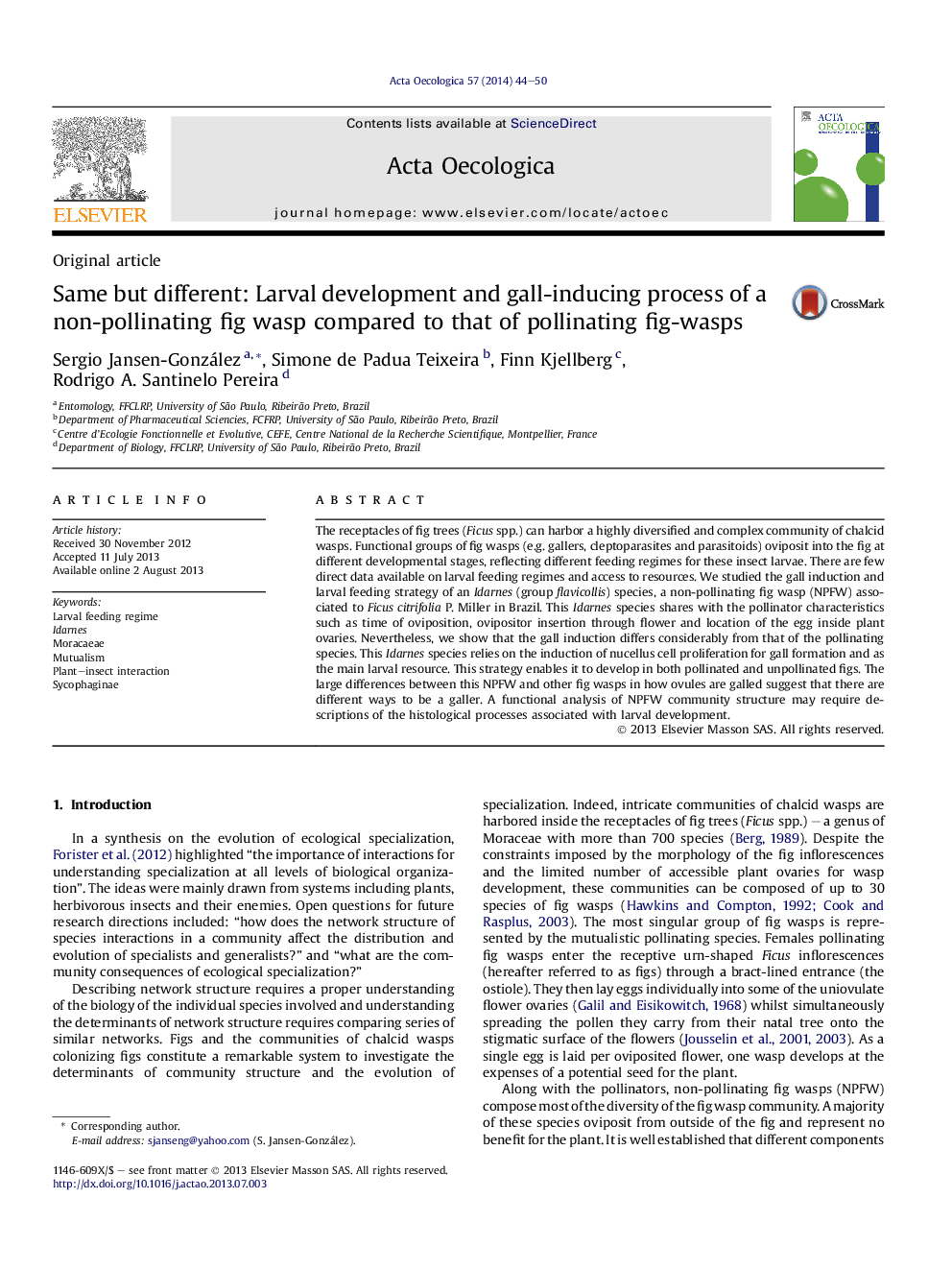| Article ID | Journal | Published Year | Pages | File Type |
|---|---|---|---|---|
| 4381037 | Acta Oecologica | 2014 | 7 Pages |
•We studied the galling process of an Idarnes species associated to Ficus citrifolia in Brazil.•We carried out a histological description of how this Idarnes species galls a fig ovule.•This species induces gall in the nucellus, which makes it independent of plant fertilization.•The large difference between the galling process of Idarnes and pollinators, suggest that there are different ways to be a galler.
The receptacles of fig trees (Ficus spp.) can harbor a highly diversified and complex community of chalcid wasps. Functional groups of fig wasps (e.g. gallers, cleptoparasites and parasitoids) oviposit into the fig at different developmental stages, reflecting different feeding regimes for these insect larvae. There are few direct data available on larval feeding regimes and access to resources. We studied the gall induction and larval feeding strategy of an Idarnes (group flavicollis) species, a non-pollinating fig wasp (NPFW) associated to Ficus citrifolia P. Miller in Brazil. This Idarnes species shares with the pollinator characteristics such as time of oviposition, ovipositor insertion through flower and location of the egg inside plant ovaries. Nevertheless, we show that the gall induction differs considerably from that of the pollinating species. This Idarnes species relies on the induction of nucellus cell proliferation for gall formation and as the main larval resource. This strategy enables it to develop in both pollinated and unpollinated figs. The large differences between this NPFW and other fig wasps in how ovules are galled suggest that there are different ways to be a galler. A functional analysis of NPFW community structure may require descriptions of the histological processes associated with larval development.
